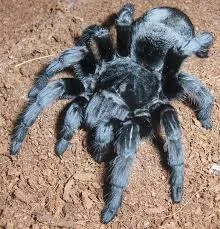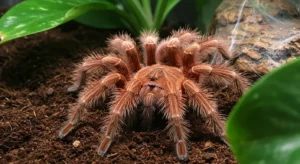Tarantula Safety
Human-Bite Reactions to Grammostola pulchra: Medical Symptoms and First Aid Protocols
Introduction: Rare but Possible
*Grammostola pulchra*, the Brazilian Black Tarantula, is renowned in the pet trade for its generally docile and calm temperament. Bites from this species are uncommon and usually occur only when the tarantula feels provoked or threatened, often as a last resort after attempting to flee or displaying threat postures. However, understanding the potential reaction and proper first aid is important for any keeper.
Nature of the Bite and Venom
*Grammostola pulchra* is a New World tarantula. Like most New World species, its venom is considered medically mild for humans. The primary purpose of the venom is to subdue insect prey, not to deter large mammals. A bite involves the tarantula piercing the skin with its chelicerae (fangs). The amount of venom injected, if any (sometimes “dry bites” occur), can vary.

Typical Symptoms
Reactions to a *G. pulchra* bite are typically localized and mild. Documented Grammostola pulchra bite symptoms usually include:
- Pain: Immediate pain at the bite site, often described as similar to a bee or wasp sting. The mechanical puncture itself causes discomfort.
- Redness and Swelling: Localized inflammation around the puncture wounds is common.
- Itching: The area may become itchy as it heals.
- Minor Bleeding: Possible at the puncture sites.
- Muscle Cramping: Some reports mention mild, localized muscle cramping near the bite area, though this is less common and usually short-lived.
Systemic effects are rare in healthy adults. The severity can depend on the individual’s sensitivity, the location of the bite, and the amount of venom injected.
Urticating Hairs: The More Common Issue
It’s important to distinguish a bite from a reaction to urticating hairs. New World tarantulas like *G. pulchra* possess barbed hairs on their abdomen that they can kick off when threatened. These hairs cause intense itching, rashes, and irritation if they contact skin or mucous membranes (eyes, nose, throat). Reactions to hairs are generally more frequent than bites and can sometimes be mistaken for bite symptoms if the tarantula flicked hairs during handling.
Allergic Reactions: While extremely rare for New World tarantula bites, a severe allergic reaction (anaphylaxis) is theoretically possible, as with any venomous sting or bite. Symptoms would include difficulty breathing, widespread hives, dizziness, or swelling of the face/throat.
First Aid Protocols for Bites
If bitten by a *Grammostola pulchra*:
- Stay Calm: Panic increases heart rate and potentially speeds venom circulation (though the venom is mild).
- Wash the Area: Clean the bite site thoroughly with soap and water to reduce the risk of secondary infection.
- Apply a Cold Compress: Use an ice pack wrapped in a cloth to help reduce pain and swelling. Apply for 15-20 minutes at a time.
- Pain Relief: Over-the-counter pain relievers like ibuprofen or acetaminophen can help manage discomfort.
- Antihistamines: Oral antihistamines (like diphenhydramine) or topical hydrocortisone cream can alleviate itching.
- Monitor Symptoms: Keep an eye on the bite area and your overall condition.
When to Seek Medical Help
Seek medical attention if:
- Symptoms worsen significantly or spread rapidly.
- Signs of infection develop (increasing redness, pus, warmth, fever).
- You experience any symptoms of a severe allergic reaction (difficulty breathing, etc.).
- The bite victim is a child, elderly, or has underlying health conditions.
- You are unsure about the tarantula species or the reaction.
Prevention
The best approach is prevention. Handle your tarantula infrequently and gently. Learn to recognize its threat postures (raising front legs, showing fangs) and avoid provoking it. Use catch cups or tongs for rehousing if you are nervous.
General first aid information is based on standard protocols for mild venomous bites/stings. Consult a medical professional for specific advice.


